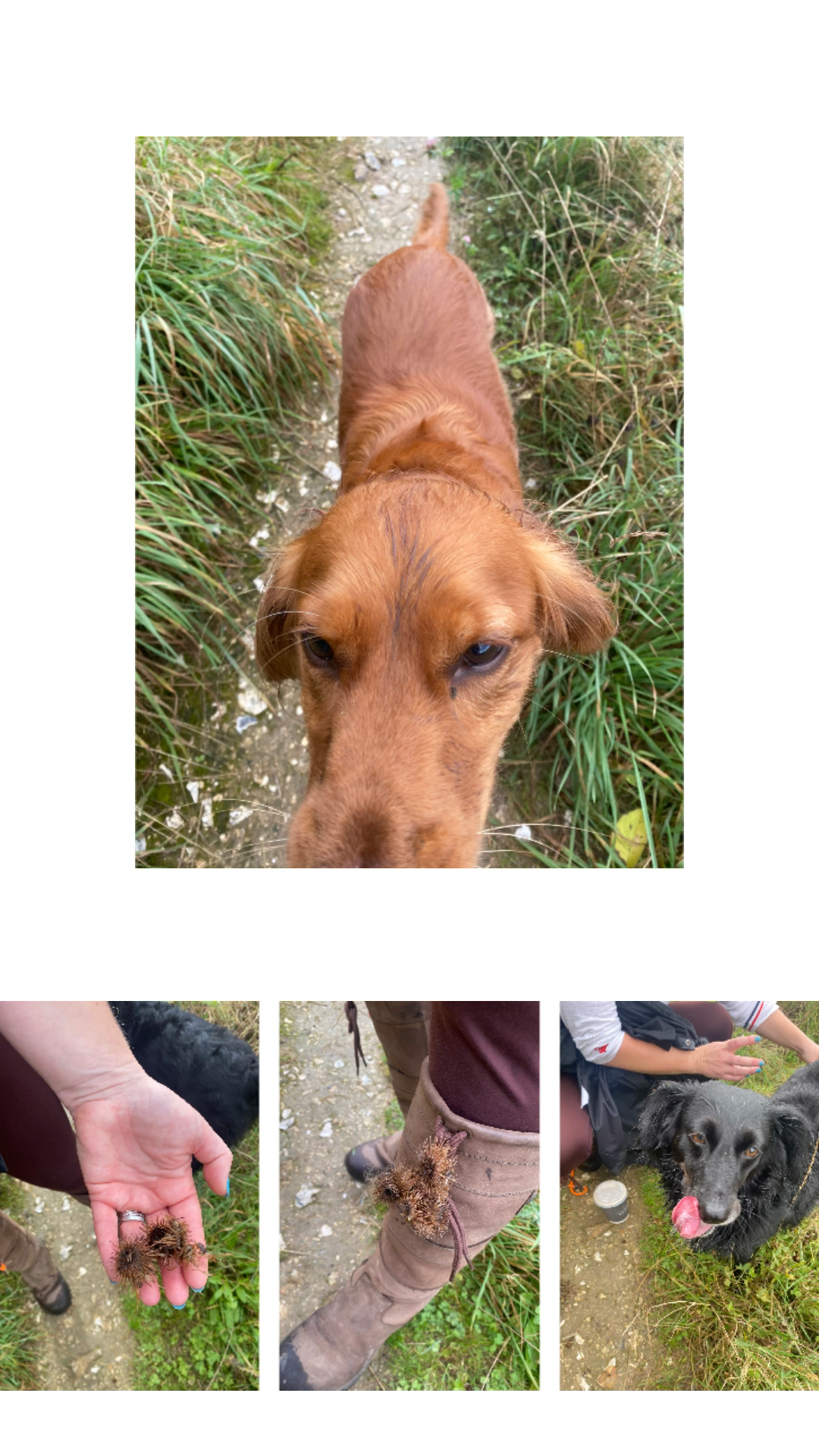Out for a walk with the dogs today and we lost them in the undergrowth for a while, as is par for the course. When they eventually popped out, they were covered in bits of bush and scrub. We struggled to get the super-sticky burrs out of their ears, tails, even stuck on our boots! And it gives me an excuse to write about one of my favourite examples of creativity and the invention of Velcro.
It’s one of those inventions that seems so simple, but it’s had a profound impact on our world. From sneakers to nappies to space suits, Velcro is used in countless products and applications. But do you know how it came to be?
The story of Velcro begins with a Swiss engineer named George de Mestral. He was on a hunting trip with his dog (just like us) when he noticed that his clothes and their coats were covered in sticky burrs. He was curious about how the burrs attached themselves, so examined them under a microscope where he saw that the burrs were covered in tiny hooks.
These hooks caught onto anything that had a loop, such as clothing or animal fur. De Mestral realized that he could create a fabric fastener that acted like the burrs, and the idea of Velcro was born.
De Mestral experimented with different materials and designs, and finally came up with a working prototype. He named his invention Velcro, a combination of the French words “velours” (velvet) and “crochet” (hook).
Velcro is more than just a convenient fastener. It’s also an example of biomimicry, the practice of designing human-made systems inspired by nature. By observing and mimicking the burrs, de Mestral was able to create a new and innovative fastener that has revolutionized many industries.
This is also the basis of a creative technique called related worlds, where you seek inspiration outside of your field or project to bring back to your challenge.
To try it out for yourself, follow these steps:
- Identify the problem or challenge that you’re trying to solve.
- Brainstorm a list of other industries or areas of life where similar problems have been solved.
- Research how those problems have been solved.
- Look for ways to apply the solutions to your own problem or challenge.
- So, if you want more trust, you ask yourself where in the world is another person or organisation, country or institution known for trust? What can we learn to take back to your problem?
In another example, Great Ormond Street Hospital called in experts from the F1 Ferrari Team when they wanted to understand better about how to co-ordinate and de-risk large numbers of people working in a small space.
The related worlds creative technique is a great way to think outside the box and come up with unexpected solutions that you otherwise would never would have thought of without the stimulus or the outside in approach.

